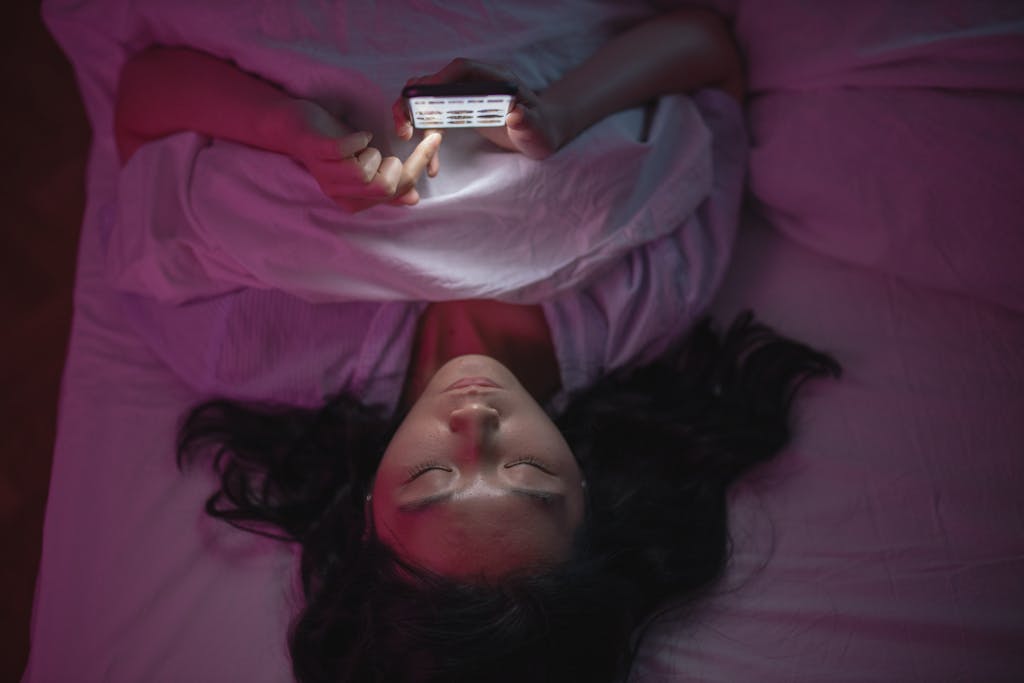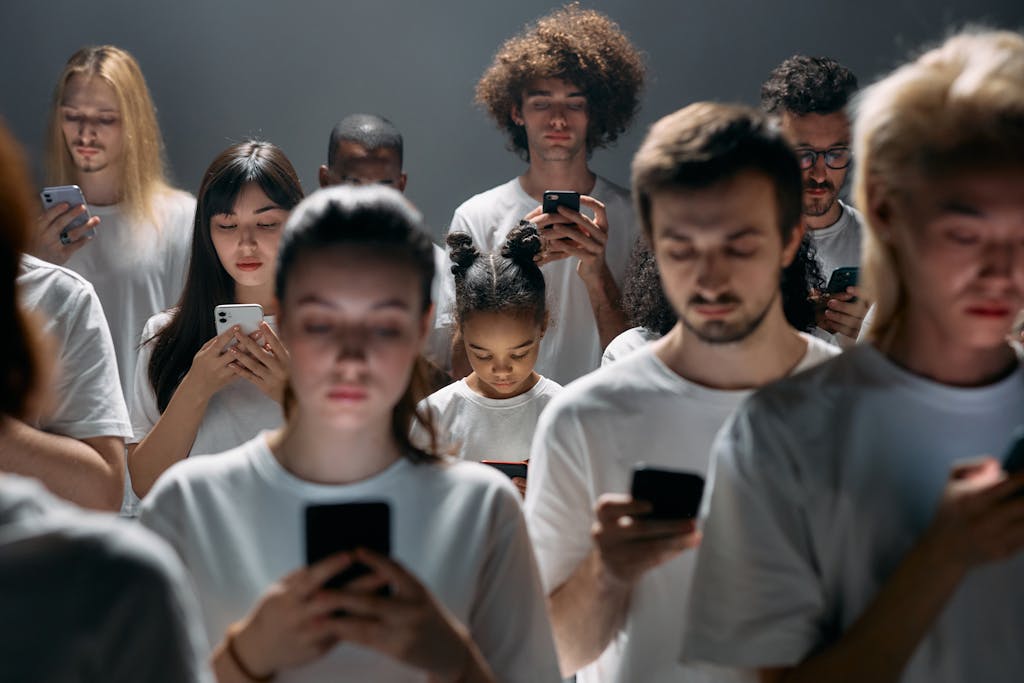Digital Addiction, By Design
How companies are hijacking our brains for profit
I’m in a coffee shop, all set up with my laptop to write. But I can’t seem to get in gear. I just don’t feel motivated. I feel tired, unable to concentrate. I probably just didn’t get enough sleep, I thought. So I head home thinking I’ll take a short nap. It was only about 2 p.m. when I lay down on my bed. I grabbed my iPhone, I’ll just check YouTube and play solitaire. After a while, I set the phone down and tried to sleep. But when sleep didn’t come after a minute or two, I’d grab the phone again. When I finally set it down for the last time, it was 2 a.m. I’d just spent 12 straight hours watching videos.

This was the moment of clarity. I’d become addicted to my phone.
How many times have you looked up from your phone to discover hours have vanished? This isn’t just poor time management—it is the culmination of thousands of careful design decisions made by companies that profit directly from our diminishing attention spans and growing dependence. The digital tools we’ve welcomed into our lives aren’t neutral; they’re deliberately designed to hijack our psychology. But recognizing the blueprint of this addiction is the first step toward dismantling it.
The Role of Dopamine in the Brain
Dopamine is a chemical messenger (neurotransmitter) that is naturally released from nerve cells deep within the brain — it acts on cells in different parts of the brain to produce a wide range of effects. Dopamine works together with other neurotransmitters such as serotonin, oxytocin, and endorphins to give feelings of pleasure, satisfaction and motivation. Dopamine also has a role to play in controlling memory, mood, sleep, learning, concentration, movement and other body functions. It is dopamine that wires the brain to seek good stuff (food, water, sex, new experiences), and avoid bad stuff (pain, danger, boredom). Often mislabeled as “the pleasure chemical”, dopamine is actually more about reinforcing the neural pathways that lead to pleasure, and decreasing the pathways that don’t. As such, the mechanics of when exactly dopamine is released has been extensively studied by brain scientists, and leveraged by companies seeking to addict humans to their products.

Reward Variability of Slot Machines
Studies have shown that dopamine is released when the reward is unpredictable and sporadic, rather than expected or absent. As such, the slot machine is the perfect addiction creator. Dopamine is not the pleasure one feels on payout, rather, it’s the urge one feels to “try one more time”. Interestingly, studies also showed that when a player knew in advance that a payout would come every 4th try, dopamine was not released. The unpredictable nature of slot machines creates a constant state of anticipation, or dopamine-induced tension, keeping players engaged.
Infinite Scrolls and Content Rabbit Holes
What Vegas perfected on the casino floor, Silicon Valley mastered in the palm of your hand. The same variable reward mechanisms and absence of natural stopping cues (there are no windows or clocks in casinos) that make gambling so addictive have been methodically integrated into the apps we use daily.
YouTube’s recommendation algorithm isn’t designed to help you find one perfect video and be done. It’s engineered to keep you watching indefinitely. My 12-hour YouTube binge wasn’t a personal failure—it was the system working exactly as designed. Each thumbnail promising something slightly more interesting, each autoplay creating a frictionless path to continued consumption.
In fact, former YouTube engineer Guillaume Chaslot revealed that the platform’s algorithm was explicitly optimized for “watch time” rather than user satisfaction. “The recommendation system was not built to help you get what you want—it was built to get you addicted to YouTube,” Chaslot explained after leaving the company.
Sean Parker, Facebook’s founding president, admitted this strategy publicly in 2017: “The thought process was: ‘How do we consume as much of your time and conscious attention as possible?'” He described the company’s approach as “exactly the kind of thing that a hacker like myself would come up with, because you’re exploiting a vulnerability in human psychology… God only knows what it’s doing to our children’s brains.”
What makes smartphone addiction particularly insidious is that, unlike casinos, we carry these slot machines with us everywhere. They’re the first thing many of us reach for in the morning and the last thing we check before sleep. Now, AI is empowering companies to even more personally tailor our dopamine hits, collecting our personal data, preferences, and ultimately, stealing away our time and lives. Why? To sell us more stuff.
The Growing Toll of Digital Dependence

The consequences of our collective digital dependence extend far beyond lost hours. Research increasingly reveals profound impacts on our mental health, cognitive abilities, and social connections.
Mental Health Impacts
A 2023 study published in the Journal of Behavioral Addictions found that individuals who use smartphones for more than 5 hours daily are 3.7 times more likely to report symptoms of depression and anxiety than moderate users. The correlation between excessive screen time and declining mental health has become so pronounced that in 2019, the World Health Organization formally recognized “gaming disorder” as a diagnosable condition.
The Attention Span of Goldfish
Our capacity for sustained attention has measurably deteriorated. Microsoft research revealed that the average human attention span dropped from 12 seconds in 2000 to just 8 seconds by 2015—shorter than a goldfish’s 9 seconds. Short videos win out over long documentaries. We’re losing patience. There is a reason I need to play videos AND play solitaire at the same time.
According to a 2024 study from University College London, the constant task-switching required by notifications and app-hopping reduces working memory performance by as much as 20% and increases cognitive errors by 36%, even when we’re not actively using our devices.
Physical Consequences
The physical toll is equally concerning. “Tech neck”—chronic neck and shoulder pain from looking down at devices—now affects 87% of regular smartphone users according to orthopedic research. Digital eye strain, affecting 65% of Americans, causes symptoms ranging from dry eyes to blurred vision and headaches.
Perhaps most alarming is the impact on sleep. The blue light emitted by our devices suppresses melatonin production by up to 50%, with nightly pre-sleep screen use associated with an average 41-minute delay in falling asleep. Poor sleep quality in turn exacerbates mental health issues, creating a debilitating cycle.
Relationships and Social Development
A 2024 longitudinal study tracking 12,000 participants found that increases in social media use corresponded with decreases in face-to-face social interactions, with each additional hour on social platforms associated with 17 fewer minutes of in-person socializing per day.

For children and adolescents, the stakes are even higher. Research from Boston Medical Center showed that when parents were absorbed in mobile devices during meals, they had 27% fewer verbal interactions with their children and 39% fewer nonverbal interactions—crucial exchanges for developing social intelligence and emotional regulation.
We’re getting a skewed view of the world through our devices. Because the algorithms only care about keeping us online, the actual content we’re served doesn’t matter. We are fed content similar to what we just watched or liked, creating silos of bias. We start to assume the whole world is as we see in YouTube, in which the most exciting, amusing or evocative content “wins”. If you binged on a steady diet of cop cam videos, you’d become convinced that America is nothing but drunks and criminals. The fact is, the real world isn’t as we see it on YouTube, Facebook, or TikTok. Compared to that hyper-stimuli, real life is quite boring.
These aren’t just statistics—they represent millions of individuals experiencing diminished well-being in exchange for the conveniences and connections our digital tools provide. And unlike many public health crises, this one comes with corporate beneficiaries who have every incentive to deepen our dependence rather than address it.
Reclaiming The Human
In The Daily Ground, I’ll explore practical strategies, personal experiments, and evidence-based approaches for implementing new outlook on technology. My hope is that “The Daily Ground” becomes not just a collection of personal essays but a community of practice – people committed to staying human in an increasingly automated world, finding balance together rather than struggling alone.
If you’d like to get involved in this effort to reclaim our human independence from technology in our daily lives, join me on terrymarr.com/thedailyground.